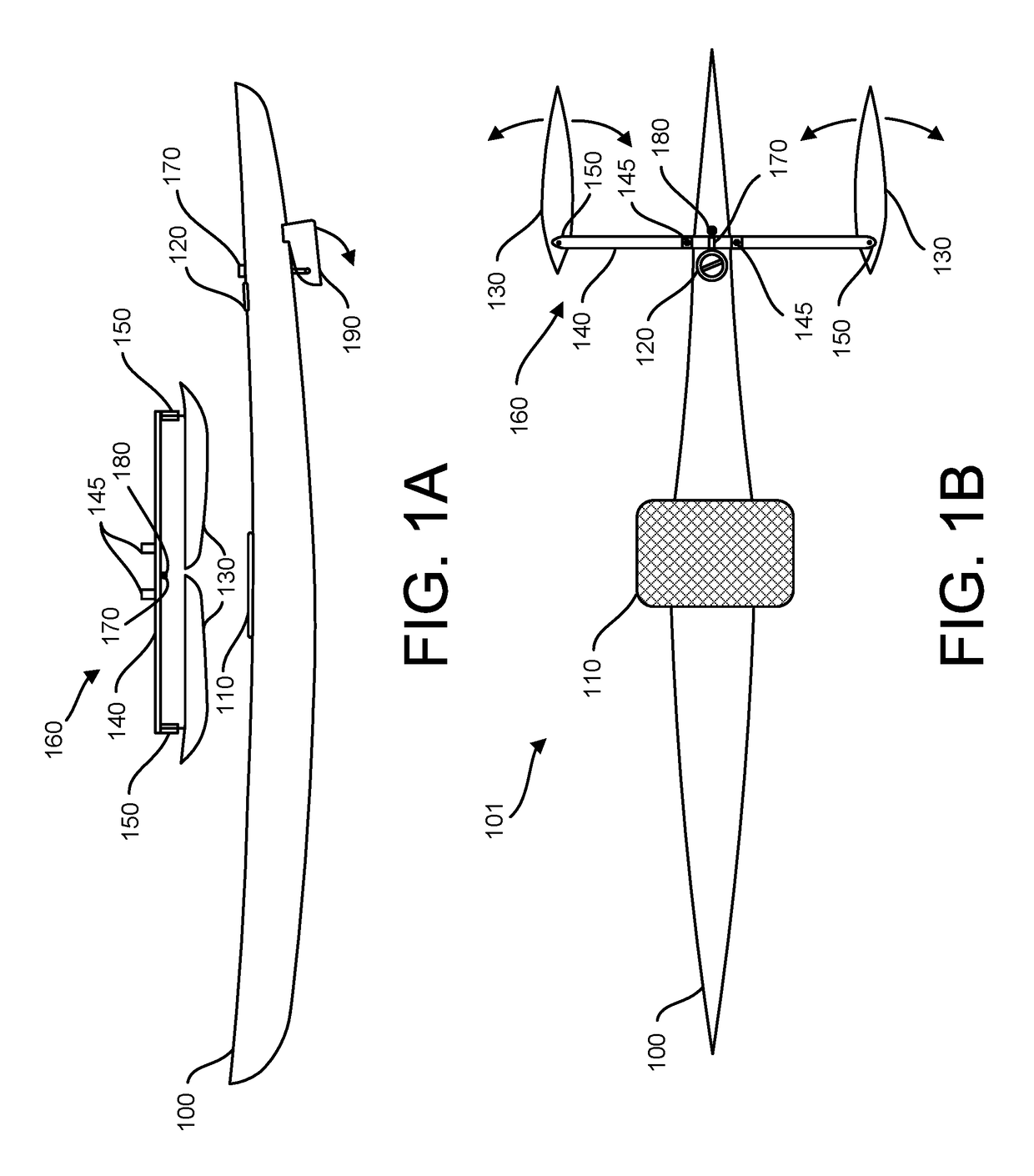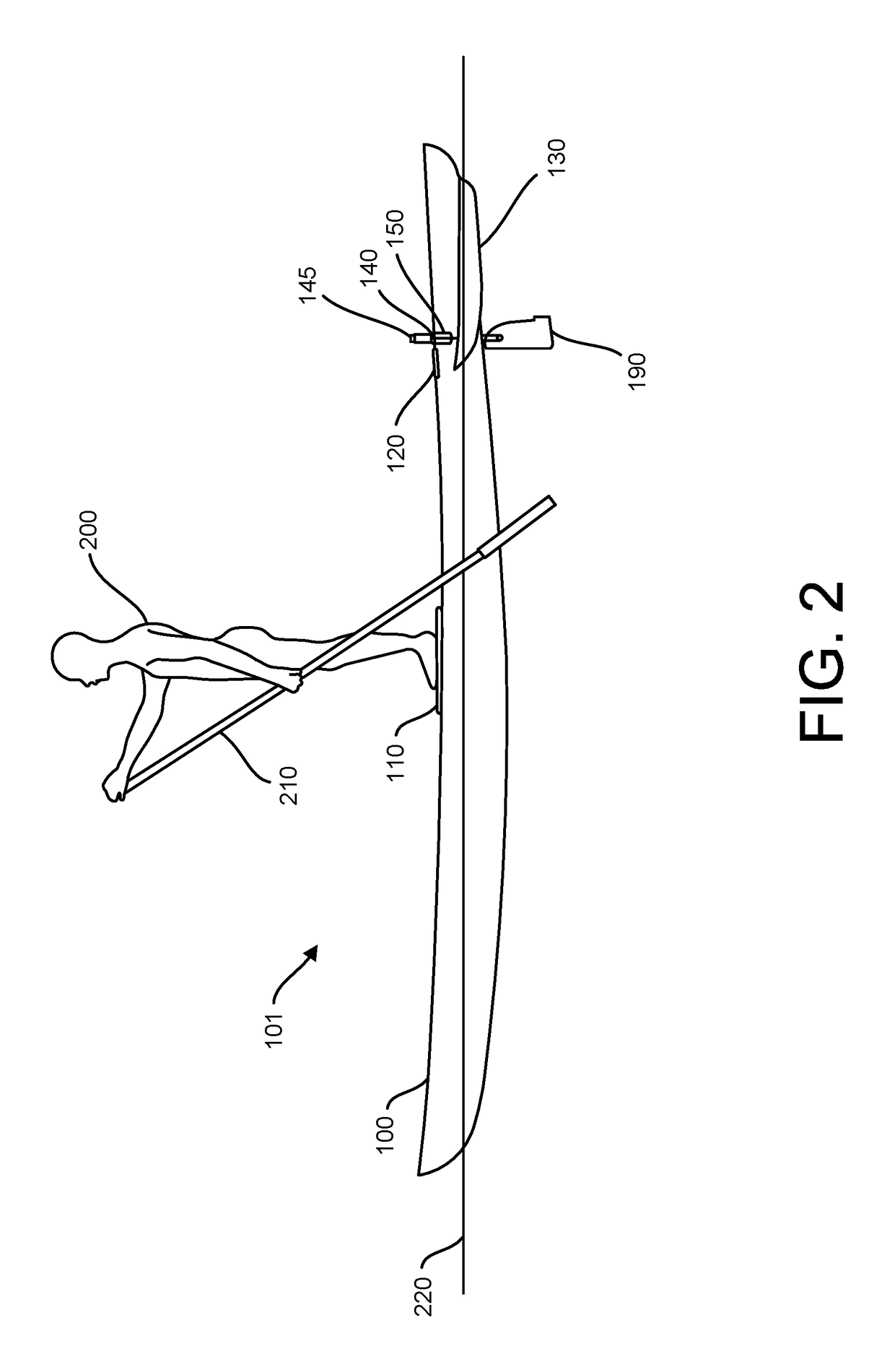Standup paddle outrigger watercraft
a technology of stand-up paddleboards and watercraft, which is applied in the field of personal watercraft, can solve the problems of sacrificing the stability of sup boards designed for speed, the wide, flat shape of surfboard hulls, and the limited maneuverability of typical sup boards, so as to improve efficiency, speed, stability and maneuverability.
- Summary
- Abstract
- Description
- Claims
- Application Information
AI Technical Summary
Benefits of technology
Problems solved by technology
Method used
Image
Examples
Embodiment Construction
[0047]This document describes a standup paddleboard outrigger watercraft, which enables a considerable improvement in efficiency, speed, stability and maneuverability over existing standup paddle watercraft.
[0048]In the following description, numerous specific details are set forth. However, it is understood that embodiments may be practiced without these specific details. In other instances, well-known materials, structures, and techniques have not been shown in detail in order not to obscure the understanding of this description.
[0049]FIG. 1A illustrates a side view of a SUPO assembly 101 in a disassembled, storage position. The SUPO includes a hull 100 and an outrigger bridge assembly 160. The hull 100 is designed as a displacement hull: long, narrow, sleek and hollow in order to make it as lightweight as possible. In some preferred implementations, the hull 100 is made of carbon fiber, but in other implementations may include any combination of glass-reinforced plastic, polyeste...
PUM
 Login to View More
Login to View More Abstract
Description
Claims
Application Information
 Login to View More
Login to View More - R&D
- Intellectual Property
- Life Sciences
- Materials
- Tech Scout
- Unparalleled Data Quality
- Higher Quality Content
- 60% Fewer Hallucinations
Browse by: Latest US Patents, China's latest patents, Technical Efficacy Thesaurus, Application Domain, Technology Topic, Popular Technical Reports.
© 2025 PatSnap. All rights reserved.Legal|Privacy policy|Modern Slavery Act Transparency Statement|Sitemap|About US| Contact US: help@patsnap.com



